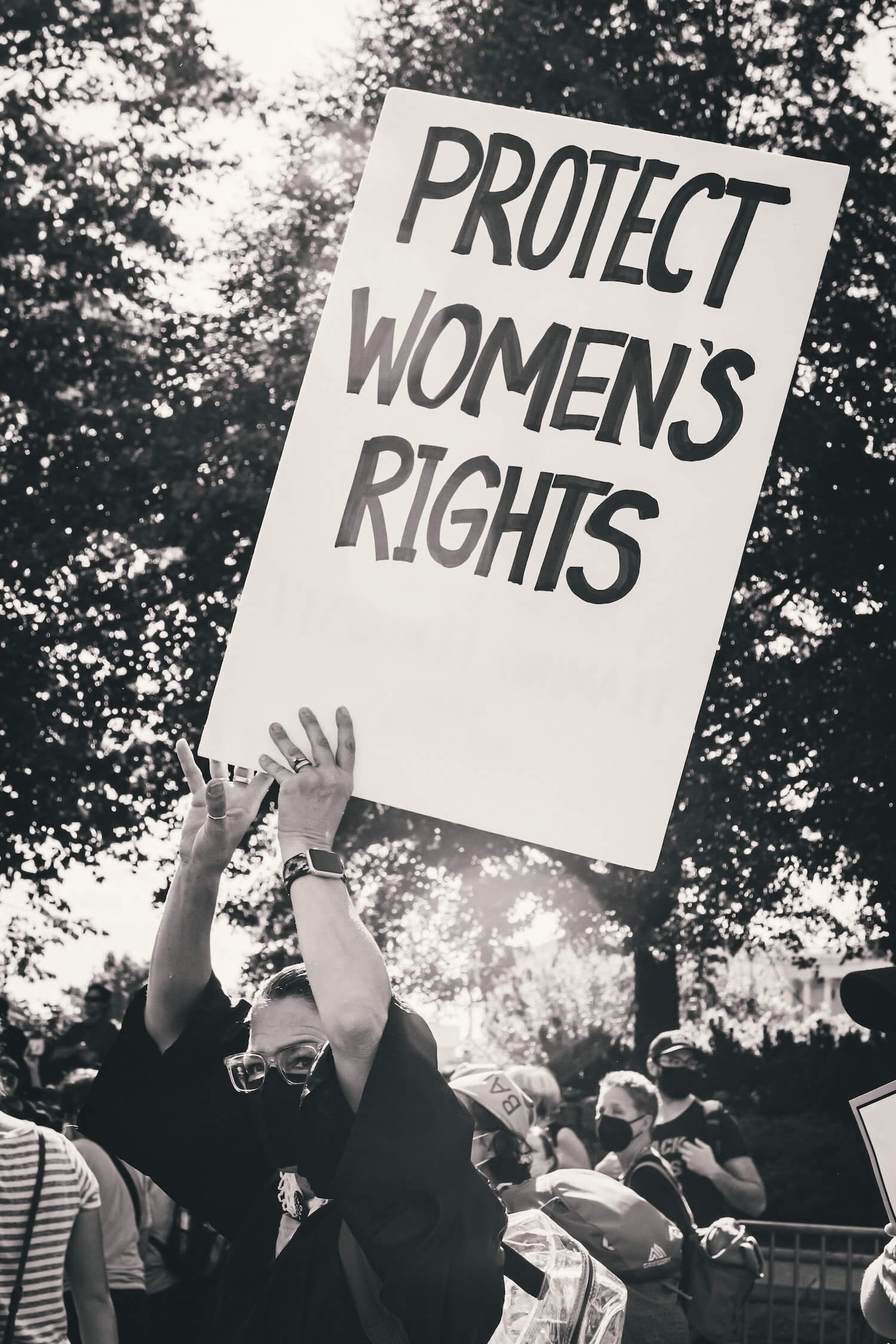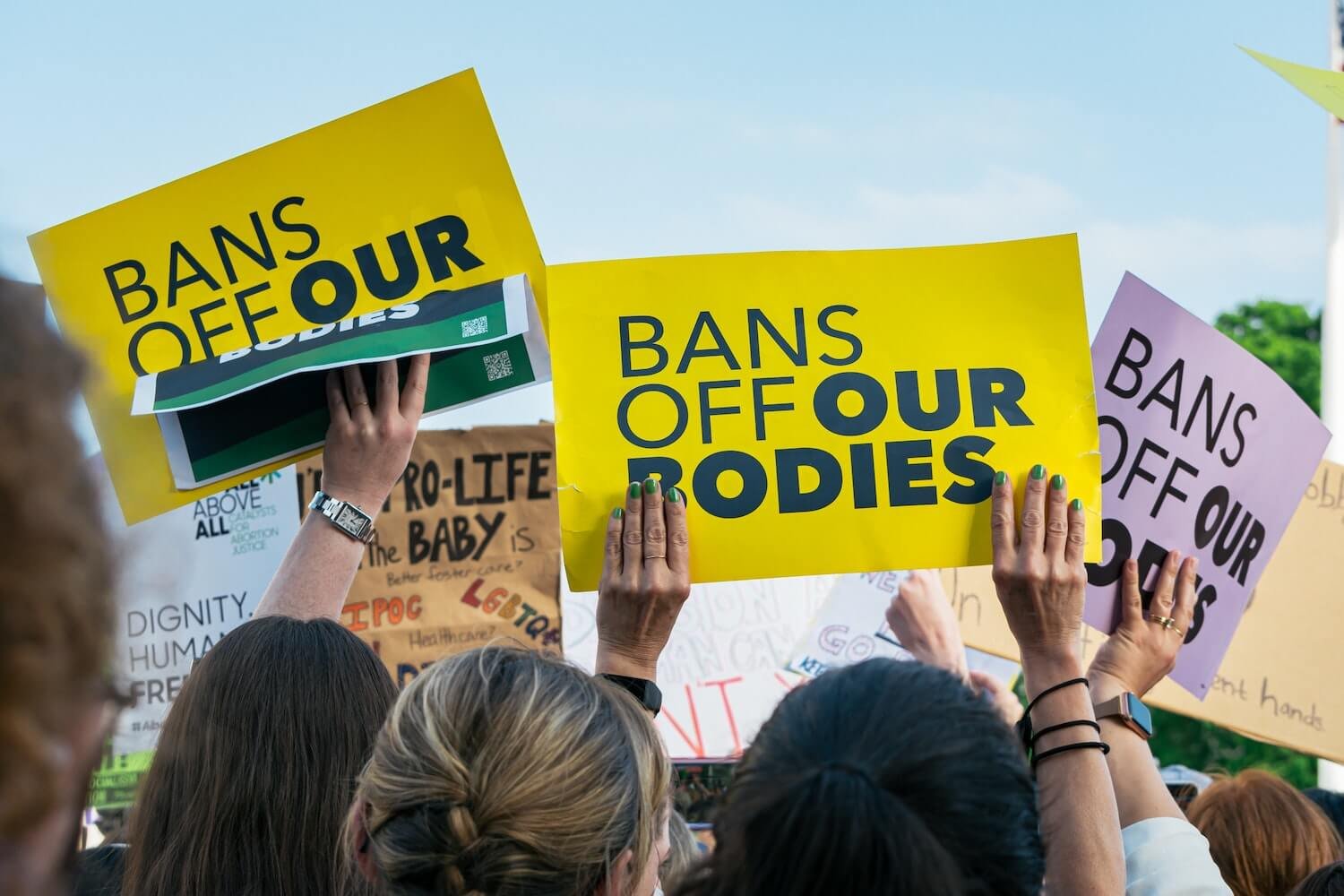Does Overturning Roe v. Wade Signal The End Of Safe Abortions?
Note: This article was written just days before this historic Supreme Court ruling. As of June 24, 2022, Roe v. Wade has been overturned.
Note: Swift wholeheartedly believes that any person regardless of identified gender can become pregnant. The term “woman” is used to mirror the verbiage outlined in the referenced research and articles.
“The detriment that the State would impose upon the pregnant woman by denying this choice altogether is apparent...Maternity, or additional offspring, may force upon the woman a distressful life and future. Psychological harm may be imminent. Mental and physical health may be taxed by child care. There is also the distress, for all concerned, associated with the unwanted child, and there is the problem of bringing a child into a family already unable, psychologically and otherwise, to care for it.” - Roe v. Wade (1973)
In May 2022, something unprecedented happened: a Supreme Court draft was leaked. This surprising incident suggested an impending overturn of Roe v. Wade, the original Supreme Court decision that legalized abortion nationwide.
This daunting indication of a change in women’s rights is sadly not surprising. Although—as of June 2022—abortion is technically still legal, the actuality of abortion access is much less guaranteed.
Several states currently have strict abortion laws in place that make receiving safe abortions nearly impossible. For example, both Texas and Oklahoma have recently passed what are known as “heartbeat bills.” These laws ban abortions past six weeks of gestation—a point long before many women are even aware that they are pregnant.
Texas and Oklahoma may be the only states to have passed a 6-week abortion ban, but they are not the only ones who have tried. Other states have attempted to pass legislation, ultimately failing to get enough regional votes.
13 states, including Kentucky, Louisiana, and South Dakota, have trigger laws in place--laws that are enacted when certain conditions are met—and are expected to fiercely prohibit and introduce criminal penalties for abortions almost immediately following an overturn of Roe.
Only a small percentage of these states currently intend to make exceptions for rape and incest.
In all, 26 states are projected to ban abortions if Roe v. Wade is overturned.
Still, millions are concerned. The pleas of the public have been ignored before. That leaves us to wonder: “What will life look like if abortions are banned in this country?”
What Happens if Roe v. Wade is Overturned?
Despite the existing restrictive laws in many states, the looming decision to overturn the right to an abortion is impactful on many levels, including the economy.
It is estimated that the removal of all state-level abortion restrictions would result in an additional 505,000 women, between the ages of 15 through 44, participating in the workforce, generating three billion dollars annually, a figure that would directly benefit the state and national economy. Thereby, forced pregnancies resulting from abortion bans, reduce a woman’s right to work as well as hindering the larger economy.
Many also believe that abortions themselves will never stop but safe abortions will. The American College of Obstetricians and Gynecologists estimate that prior to the decision in Roe v. Wade, 1.2 million American women received unsafe, illegal abortions annually, resulting in approximately 5,000 deaths. Today’s research describes unsafe abortions as “a leading – but preventable – cause of maternal deaths and morbidities.”
Worldwide, 60% of unplanned pregnancies result in abortion, and 45% of all abortions are unsafe, with the majority occurring in developing countries. These numbers highlight the fatal implications of abortion bans: pregnant bodies will likely continue to seek out terminations, even at the risk to their own life.
While the existing language in some proposed laws prohibit cross-state travel for abortions, it can safely be assumed that travel outside of the country would be punished to the best of the state’s ability as well.
Even more troubling, we know that states—such as Louisiana—are moving to consider abortion a homicide, by granting constitutional rights to all fetuses from the point of fertilization. Many more states are also calling for financial or criminal penalties against those who receive and/or aid and abet abortions.
These current or proposed laws indicate an increased criminalization of all pregnant bodies, even including those who have miscarried.
Because of this, there has been growing speculation that miscarriages occurring in these stricter states would be investigated in order to determine if the pregnant person had a “natural” miscarriage or a would-be illegal abortion.
In addition, if Roe is overturned, it is possible that HIPAA may no longer offer protections against officials looking into what is deemed “relevant medical history.”
This dangerous possibility has already begun to take effect with the 2021 manslaughter conviction of a 20-year-old Native woman, Brittany Poolaw, after her debated miscarriage.
It may be safe to assume that trials such as Poolaw’s will become commonplace spectacles.
An abortion ban may also implement barriers to receiving treatments for miscarriages, as many closely resemble post-contraceptive measures. Pharmacies across the country are already refusing (or are unable to fill) miscarriage medicines--prescriptions that can also be used to induce an abortion—in part due to current FDA classifications.
While each of these possible consequences is detrimental, what may be the most frightening result of overturning Roe v. Wade is the rate of homicide.
In the United States, homicide ranks as the leading cause of death for pregnant and postpartum persons. Black women are three times more likely to fall victim to intimate partner homicide during pregnancy than White and Hispanic women and 8.1 times more likely than “non-pregnant peers.” This research is hard to fathom and even more difficult to conceptualize in the face of a nationwide abortion ban.
If Roe v. Wade is overturned, will more pregnancies lead to more pregnant lives being taken away?
Present Abortion Access
Presently, we see rampant blockages for abortion access that don’t simply top at the heartbeat bills. The widely varying cost of abortion (which averages around $750) is a major restricting factor in receiving safe abortions.
While insurance can assist in covering the price of an abortion, it is at the discretion of the company. One woman was charged over $14,000 after her insurance concluded that her abortion was elective. The insurance company made this decision even after evidence showed that the unborn baby boy was detected to have a condition that significantly increased the chance of infant mortality or stillbirth.
Other costs included in receiving safe abortions may consist of travel fees and hotel stays, missed wages, and counseling.
Some women have no financial means in which to pay for an abortion. This discriminatory policy, known as the Hyde Amendment, “prohibits federal funds from covering abortion services for people enrolled in Medicaid, Medicare, and the Children’s Health Insurance Plan (CHIP),” and has done so each year since 1976, with only a select few years having seen this amendment provide exceptions for rape and incest.
Recent rates show that Black women, followed by Hispanic women, are nearly twice as likely to be enrolled in Medicaid. Additionally, minorities are more likely to be monitored by CPS, meaning that a number of BIPOC women endure involuntary governmental involvement at each stage of parenthood.
We are left to wonder: Will this crisis intensify under a nationwide abortion ban?
Why are Abortion Bans Happening?
A puzzling question on many minds is why. Why exactly are government officials and conservative Americans pushing for forced pregnancies now, seemingly more than ever? Unfortunately, the answer to that question isn’t simple nor confirmed, but we can use history to better grasp the most likely answers.
Laws are often a reflection of the times. Or at least, a depiction of the culture as imagined by the ruling class.
Abortion bans can best be described as placing importance on subjective morality over bodily autonomy, safety, and the freedom the Constitution of the United States once promised.
The laws regarding abortions and other post-contraceptives have flowed with the strongest tide of their time. The late 1960s through ‘70s saw a peace-loving movement focused on freedom. Within this movement, the original Roe v. Wade decision was made on January 22, 1973.
As of 2022, society is once again reformatting itself, this time under a strict conservative lens and has been for quite some time. The catalyst of the current radical conservative movement is most likely a result of former President Donald Trump’s powerful rhetoric, following years of disgruntled Americans underneath a Democratic leadership.
The leaked Supreme Court draft, indicating an overturn of Roe v. Wade, mirrors the present ruling class's desire to return to the American politics of pre-1973, a political environment that primarily benefited conservative, white males.
Laws and legislation are also often a result of the most supported moral beliefs of the time. Although the First Amendment of the Constitution reads that “Congress shall make no law respecting an establishment of religion”—commonly paraphrased as “the separation of church and state”—follow-through of this declaration is subjective. In fact, it can be argued that the current political climate and resulting abortion restrictions are deeply rooted in Christianity. Not all (but many) Christians vehemently oppose abortion and liken it to a major sin.
Despite a 75% decline in self-identified Christians in the US, 63% of the overall population identifies with the religion. These numbers indicate a religious majority that may impact the rights of all, even those who do not adhere to those beliefs.
How You Can Help
Many groups and individuals are actively rallying to prevent this proposed reversal of basic human rights. Organizations like Planned Parenthood have started petitions and broken down the ways anyone—from individuals to businesses—can help stop an overturn of Roe from happening.
Pro-choice advocates and everyday individuals who support the wellbeing of all have been marching en masse in cities across the country, making a proud, visible statement to the government. Other ways that you can help include donating to abortion funds (while still legal) and planning to vote pro-choice officials into office in order to remove anti-choice politicians in the next election season.
The Impact of Safe Abortion Access
Abortion could be a simple topic in which we agree this form of bodily autonomy is a part of the freedom the American Constitution prides itself on. Instead, the possible overturn of Roe v. Wade finalizes the slow-moving regression of women’s rights to individuality, financial freedom, and equitable healthcare. The likelihood of forced pregnancies won’t seamlessly benefit the adoption spectrum as one may assume. In fact, abortion bans are more likely to introduce increased deaths and homicides—of both parent and unborn child—before providing any benefits.
The impact of forced pregnancies is harrowing and will be exacerbated if the leaked draft comes to fruition. Overturning Roe v. Wade will be more than just updating a simple law. It is a change in legislation that will declare a new detrimental reality for millions.






